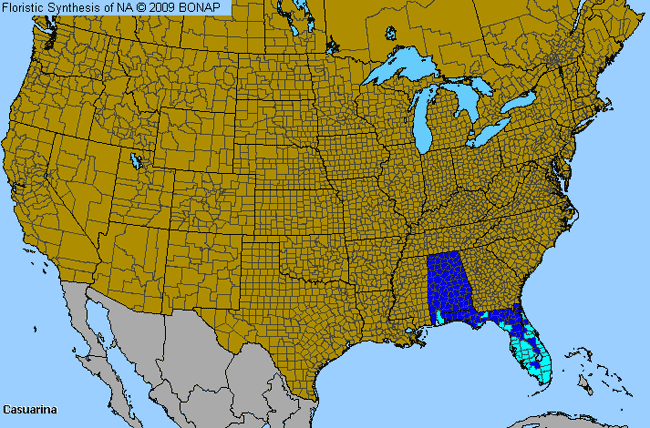She-Oak (Casuarina)

She-Oak Genus Details

Australian pine is fast-growing; it can grow 60 feet tall in 6 years with a weeping growth habit. Several tree and shrub species have been planted in southern Florida and California as shade trees, hedges, ornamental plants, or windbreaks. The tree form has naturalized in some areas and forced out native vegetation. Australian pines have very reduced flowers, and the silver-grey needle-like branches. These brances have leaves that are reduced to scales that superfically resemble pines. The flowers are wind-pollinated and shed large amounts of pollen in spring and autumn, depending on the species and annual variation. The tree forms flowers in late summer in the southern Florida area where it has been reported to cause pollinosis.
She-Oak Allergy Info

Pollen has moderate allergy effects. In Cuba, this tree has been reported to contribute more airborne pollen than any other tree.
She-Oak Pollen Description

Grains are usually suboblate; the amb triangular with convex sides and 3-(4)-porate, aspidate, and slightly lolongate.
Grains are 19-21 x 22-30 micrometers.
Species in This Genus

Allergenicity Legend:
 Mild Allergen |
Mild Allergen |
 Moderate Allergen |
Moderate Allergen |
 Severe Allergen |
Severe Allergen |
 Allergy Test Available
Allergy Test Available
She-Oak (Casuarina) is a genus of the CASUARINACEAE family.
This genus includes the following allergenic species:
This genus includes the following allergenic species:











